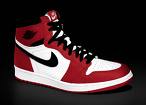Social Media and the Student
My good friend Deirdre Honner, the HR Maven is giving a speech to 800 MBA students today, focusing on 'Social Media and the Job Search'. I am sure she will do a fantastic job sharing her insights, strategies, and resources to help equip these students for a better chance of success in their upcoming job searches.
Much has been written about how to leverage social media in the search, some excellent resources are here, here, and here.
So rather than try and improve upon, or at least add to the existing body of information on using social media in the job search, I'd rather try and talk to what I think are some strategies that make sense for the MBA (or really any college or grad student) to leverage social media, more to support their studies and by extension, position themselves for upcoming job searches.
Get Familiar - a key to leveraging social media in your studies and beyond is first understanding the environment in your specific area of interest or expertise. If you are focusing on accounting for example, are there Ning networks, or professional association communities where like-minded practitioners congregate? Or are there a few key LinkedIn groups that you should join? Some disciplines like Marketing have a very vibrant Twitter presence. Or it could be the local organizations that present professional development events and social meetings are the best approach. The key is to start listening and observing to determine the best ways to invest your efforts. Understanding a bit about how your particular interest is represented in social media is a key to understanding the best use of your time.
Collaborate - in school it is certain that much of your time and energy will be spent on group projects. Learning how to effectively collaborate with peers, under time pressures, and at times with limited ability for face to face meetings is a critical skill to master both in school, and in the corporate world. A mastery of working in groups as well as managing group performance will likely be the primary differentiating skill in management in the future. Heck, it probably is that way today. I think the most successful team leaders will have a good understanding of two key aspects of team collaboration, one, the conditions that are necessary to foster effective collaboration, and two, the core social technologies that are available to support these activities.
Claim - It is standard advice for students and job seekers to setup up a LinkedIn account, and possibly a Twitter account to use for networking and connecting with recruiters and other professionals. That is of course a sound strategy, but if you are really interested in making more of an impact in social media and positioning yourself as a future leader, you really should consider starting your own blog. For me, no one heard of me, took me all that seriously, or sought me ought for advice or opportunities until I had established some credibility in the space via this blog. I do think in many ways having a business focused blog is a key to set you apart from the crowd. It can demonstrate your reasoning ability, your mastery of your subject matter, and of course your writing capability. Being 'public' with your thoughts on a blog forces you to improve. You absolutely will get smarter by blogging.
Connect - Certainly the prime motivator for students and early career professionals in using social media is to network with other professionals. These can be professionals in your specific area of study or expertise, your geographic region, or some combination. When I need some advice, assistance, or the name of someone in a particular organization in order to solve a problem, or otherwise improve my course content, or my ability to deliver, I turn to my network first. And I have to say in the last year, my network has never let me down. But I can only leverage that resource because I (try) to consistently give back to my network and to the community at large, (see 'start your own blog' above). I promise you will get back way more than you give in the long run.
So that is my advice, but really the best advice I can really give is listen to Dee, she has seen it all, and I would pay to hear her speak and you guys are lucky to have her as a presenter.
And in the spirit of connecting and giving, feel free to connect with me, my contact information is on the blog, and I will be happy to help in any way I can.

 Steve
Steve

